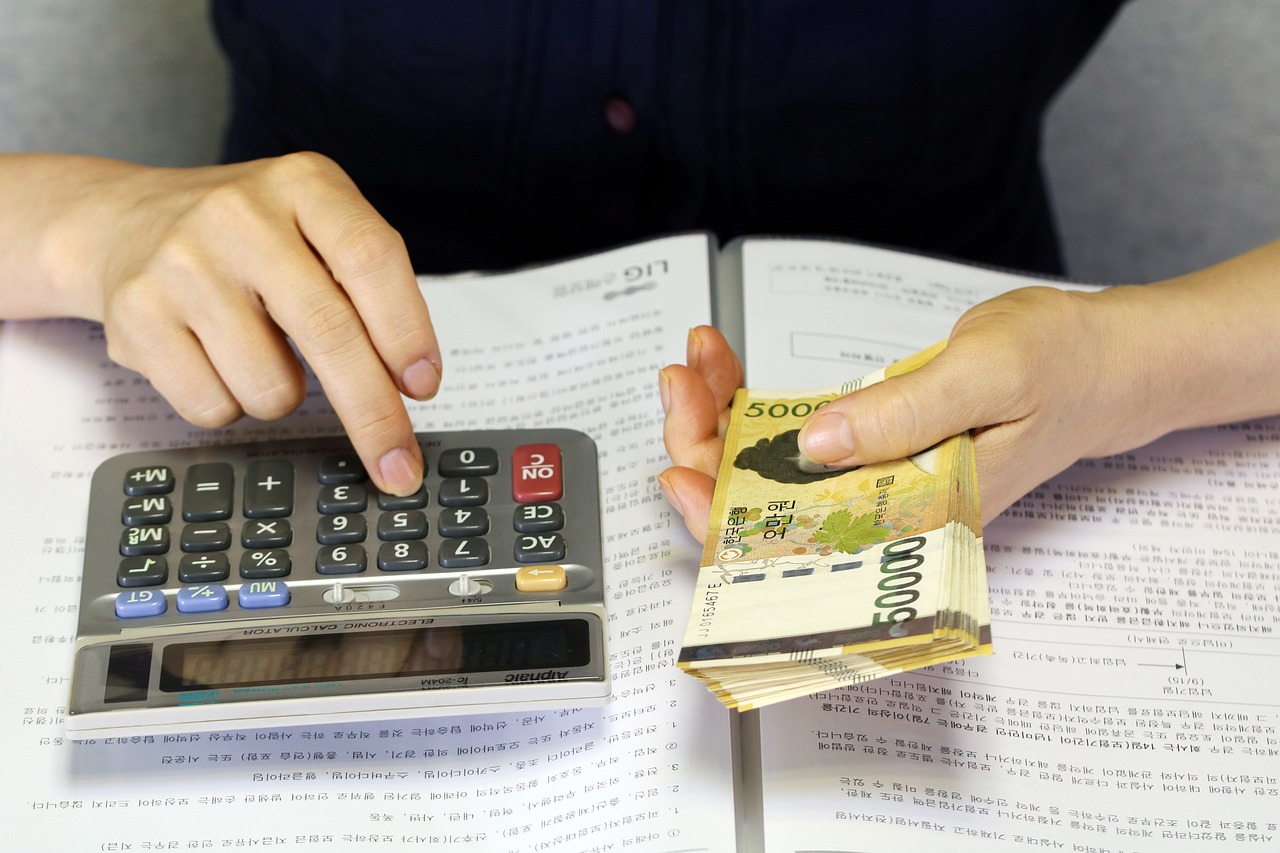Effortless Money Transfers: How to Easily Send Funds via Third-Party Apps using Your Checking Account
GPT_Global - 2024-02-12 03:30:02.0 513
What is the process for sending money from my checking account through a third-party app?
Sending money from your checking account through a third-party app has become a popular and convenient way to make remittances. With just a few clicks, you can transfer funds to your loved ones or pay for goods and services without having to physically visit a bank or send cash. But how exactly does this process work? Let's break it down step by step.
Firstly, you need to download a third-party app that offers remittance services. There are many reliable and secure options available such as PayPal, Venmo, Zelle, and Square Cash. Once you have downloaded the app, you will need to create an account and link it to your checking account.
Next, you will need to verify your identity and the details of your checking account. This is typically done by entering the information of your bank account, such as the account number and routing number. Some apps may also ask for a photo of a voided check or a bank statement for verification purposes.
After your account has been verified, you can start sending money through the app. Simply enter the amount you want to send, as well as the recipient's details, such as their email address or phone number. You can usually choose to send the funds instantly or select a specific date for the transfer to be processed.
The final step is to confirm the transaction and authorize the app to debit the funds from your checking account. Depending on the app, you may also receive a notification or confirmation email once the transfer has been successfully completed.
It is important to note that some third-party apps may charge a small fee for using their remittance services, while others offer this service for free. Additionally, the time it takes for the recipient to receive the funds may vary depending on the app and the receiving bank's processing times.
In conclusion, sending money from your checking account through a third-party app is a simple and fast process that can save you time and hassle. As always, make sure to choose a reputable app and double-check all the details before confirming any transactions.

Can I send money to multiple people at once using my checking account?
Sending money to multiple people at once can be a convenient and efficient way to handle your remittance needs. With the rise of digital banking, many remittance businesses now offer the option to send money to multiple recipients using your checking account. This feature is especially beneficial for families who have loved ones in different locations or for businesses that need to pay multiple employees or vendors at once.
The process of sending money to multiple people at once using your checking account is quite simple. First, you will need to set up an online account with a remittance service provider. Once your account is set up, you can link your checking account to the remittance service. This typically involves providing your checking account information such as your account number and routing number.
Once your checking account is linked, you can start sending money to multiple people at once. Most remittance service providers have a “send money” feature where you can select multiple recipients and enter the amount you want to send to each person. You can also choose the currency and payment method for each recipient, making it easier for you to customize the transactions according to your needs.
After you have entered all the necessary information, you can review and confirm the transactions before finalizing the transfer. Some remittance service providers may also offer the option to schedule recurring transfers to make things even more convenient for you. Once the transfer is complete, the recipients will receive their funds in their respective accounts.
Sending money to multiple people at once using your checking account is not only convenient but also cost-effective. Many remittance service providers offer competitive exchange rates and lower fees when you choose to send money to multiple recipients at once. This can help you save money compared to sending individual transfers to each person.
In conclusion, if you need to send money to multiple people at once, using your checking account through a remittance service provider is a hassle-free and economical option. With just a few clicks, you can send money to your loved ones or pay your employees or vendors, making your remittance process more efficient. So why wait? Set up your online account with a remittance service provider today and enjoy the benefits of sending money to multiple people at once.
What are the security measures in place for sending money by checking account?
Security is a top priority when it comes to sending money through checking accounts. Remittance businesses have implemented various measures to ensure the safety and protection of their customers' funds. Here are some of the security measures in place for sending money by checking account:
Encryption: Remittance businesses use encryption technology to secure all online transactions made through checking accounts. This helps prevent unauthorized access to sensitive personal and financial information.
Identity Verification: Before sending money, remittance businesses require customers to verify their identity. This can be done through various methods such as providing personal information, answering security questions, or uploading identification documents. This helps prevent fraudulent activities and protects both the sender and recipient.
Secure Servers: Remittance businesses have secure servers that are protected by firewalls and constantly monitored for any suspicious activity. This ensures that all customer information and transactions are kept safe from hackers and cybercriminals.
Transaction Limits: To prevent large sums of money from being transferred without the customer's knowledge, remittance businesses have set transaction limits for checking account transfers. This provides an added layer of security and control over the amount of money being sent.
Transaction Monitoring: Remittance businesses also have strict monitoring systems in place to detect any unusual or suspicious activity. If any irregularities are found, the transaction will be flagged for further investigation.
Fraud Detection: To protect customers from falling victim to fraud, remittance businesses have advanced fraud detection systems in place. These systems can identify and prevent fraudulent transactions from going through.
Privacy Policy: Remittance businesses have a strict privacy policy in place to ensure the protection of their customers' personal and financial information. This includes not sharing any information with third parties without the customer's consent.
In conclusion, remittance businesses have various security measures in place when it comes to sending money by checking account. These measures help protect the funds and personal information of their customers, making the process of remitting money safe and secure.
How do I set up my checking account to be able to send money?
Setting up your checking account for remittance services is quick and easy. By following a few simple steps, you can ensure that you are able to send money efficiently and securely.
The first step is to choose a reputable remittance business that offers checking account services. This will typically involve researching and comparing different companies to find the one that best fits your needs. Look for factors such as low fees, good exchange rates, and fast processing times.
Once you have selected a remittance business, you will need to provide them with information about your checking account. This may include your account number, routing number, and the name of your bank. This information can usually be found on a voided check or by contacting your bank directly.
Next, you will need to set up a transfer method for sending money from your checking account to the remittance business. This can usually be done online or through your bank's mobile app. Simply enter the remittance business's account information and the amount you wish to send.
Finally, it's important to double check all the information before finalizing the transfer. Once the transaction is complete, the remittance business will typically provide you with a confirmation or receipt for your records.
It's always a good idea to keep track of your transactions and monitor your checking account to ensure that everything is in order. With these steps, you can easily set up your checking account for remittance services and send money safely and efficiently. Don't forget to also check the transfer fees and exchange rates for each transaction to make the most out of your remittance service!
Are there any limits on the number of transactions I can make from my checking account?
Understanding Transaction Limits for Your Checking Account
If you have a checking account, chances are you use it frequently to make transactions. Whether it's paying bills or withdrawing cash, checking accounts offer convenience and accessibility for managing your money. However, it's important to understand that there may be limits on the number of transactions you can make from your checking account.
Firstly, it's important to note that these limits vary depending on the financial institution and type of checking account you have. Some banks may have a limit on the number of transactions you can make in a day, while others may have a limit on the number of transactions per statement cycle. It's always best to check with your bank to find out their specific policies.
There are several reasons why banks impose transaction limits on checking accounts. One reason is to ensure the safety and security of your account. By limiting the number of transactions, banks can keep a closer eye on any unusual activity and prevent fraud or unauthorized access to your funds.
Another reason for transaction limits is to help manage the bank's liquidity. When you make a transaction, it requires the bank to use its funds to complete the transaction. By limiting the number of transactions, banks can better manage their cash flow and ensure they have enough funds available for all customers.
Transaction limits may also be in place to encourage customers to maintain a minimum balance in their checking account. If you constantly exceed the transaction limit, you may be charged fees or face restrictions on your account. By keeping a minimum balance, you can avoid these charges and continue to have access to your funds without any limitations.
Overall, it's important to keep track of your transactions and be aware of any limits imposed by your bank. By doing so, you can avoid any unexpected fees and ensure smooth management of your checking account. If you frequently exceed the transaction limit, consider upgrading to a different type of checking account that may offer higher transaction limits or no limits at all.
About Panda Remit
Panda Remit is committed to providing global users with more convenient, safe, reliable, and affordable online cross-border remittance services。
International remittance services from more than 30 countries/regions around the world are now available: including Japan, Hong Kong, Europe, the United States, Australia, and other markets, and are recognized and trusted by millions of users around the world.
Visit Panda Remit Official Website or Download PandaRemit App, to learn more about remittance info.


